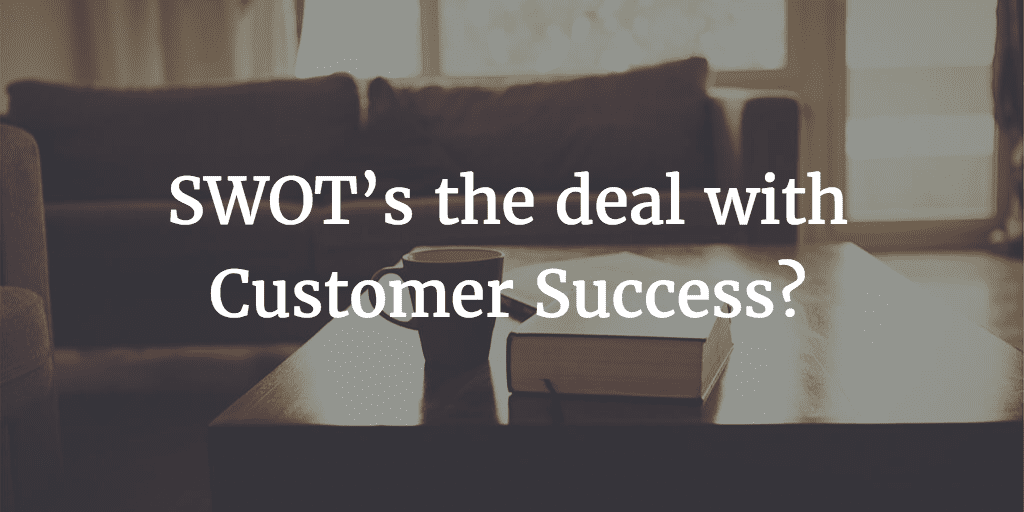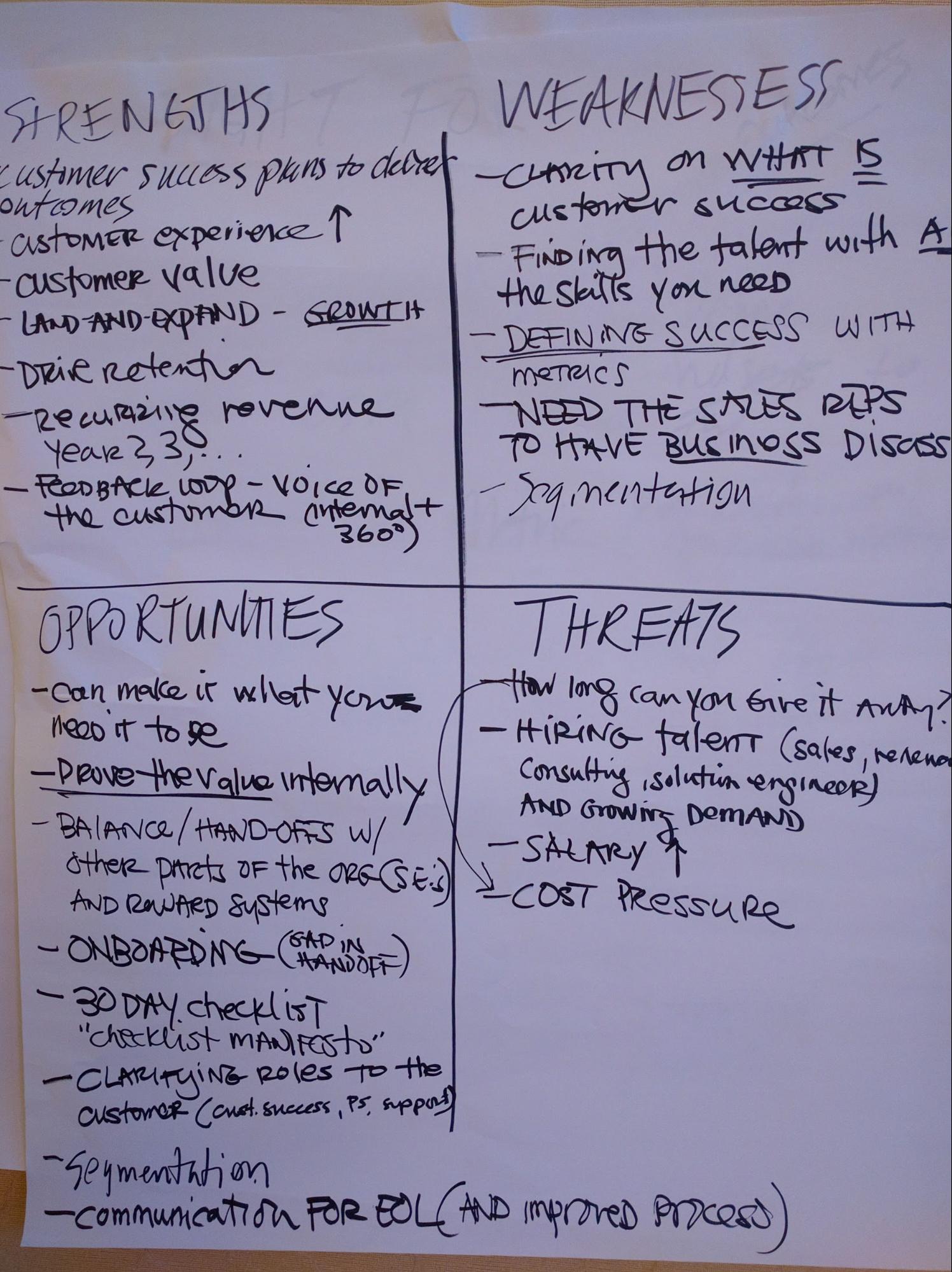This blog is the first of five based on anonymized discussions from CCO Summit 2016.
A SWOT analysis is a framework that companies and business school professors have been conducting since as far back as the 1950s. If you’re interested in the history of SWOT, Tim Friesner posted a pretty comprehensive investigation of the muddled, abstruse origins of the technique.
That being said, chances are fair to middling that you’ve never heard the term before. Turns out all this time, your CEO wasn’t actually talking about the 2003 movie starring Samuel L. Jackson, Colin Farrell and LL Cool J. That’s okay! SWOT is just a handy method for visualizing and operationalizing a way of thinking strategists have used since they were figuring out how to take down wooly mammoths with stone tools.
The framework stands for Strengths, Weaknesses, Opportunities, and Threats.
Last month, Gainsight brought together over 100 Chief Customer Officers from around the world to Napa Valley for an intimate conversation on the future of Customer Success. The executives were organized into teams of ten, and together worked through a series of exercises, including a current SWOT analysis on the state of Customer Success within their businesses.
Here’s what a sample chart from CCO Summit 2016 looked like:
The exercise was useful because it helped the teams consider all angles of the current condition of our industry without overlooking key details.
With all the names anonymized to protect the innocent, here are what some of the top CS minds in the world have determined to be the biggest strengths, weaknesses, opportunities, and threats for Customer Success this year:
Strengths
- Customer Success is often the mechanism through which your entire organization gets trained on your product’s use. That makes it a crucial component of any company.
- The strong emphasis on community in CSM drives connections between your company and its customers as well as amongst your customers.
- CSMs pay very close attention to the Voice of the Customer. Sales, Marketing and Product teams are figuring this out and looking to the CSM for that invaluable info!
- Customer Success drives accountability across the entire organization. CSMs hold every individual and department accountable for how they relate to the customer.
Weaknesses
- The definition of Customer Success is fluid. It’s different from company to company, and it’s always changing. This can make it hard to even talk about Customer Success.
- Hiring can be difficult. Not only does the skillset needed vary greatly from company to company, it often varies from product to product!
- When and how does a CSM enter the relationship during the sales process? There are few (if any) rules across the industry for how the handoff happens.
- Customer Success still depends on a very strong and specific framework from Sales to take over the company/client relationship.
Opportunities
- As Customer Success continues to align with Marketing, CSMs could have the ability to tell their customers’ success stories like never before. It’s a golden chance to build your company’s narrative around its greatest asset.
- Customer Success generates some of your company’s most meaningful performance metrics. They give you an opportunity to justify your budget internally as well as externally to your customers, and ultimately drive growth.
- Some analysts are warning of a downturn in the tech economy. While this could easily be put in the threat column, it may actually drive CEOs to place more emphasis on Customer Success to protect your existing revenue.
Threats
- CSMs are proving themselves more and more with every opportunity. As your CSM team continues to be successful, other departments will want a bigger piece of your metrics, your talent, and your time.
- Customer Success is all about the long game. Victory is often measured in Lifetime Value as opposed to big, one-time deals. Without instant ROI, your team could be under pressure. That makes the right metrics absolutely crucial.
- As the value of Customer Success increases, CSMs are getting more and more expensive to hire. The pool of available, experienced talent isn’t growing to keep up with demand. CSMs need to work harder to justify their cost.
- Another factor raising the cost of Customer Success is the heavy concentration of CSMs in the Bay Area. Customer Success will continue to grow in value, it also needs to expand its geographic footprint.
Obviously this is only a snapshot into the discussion, but it certainly covers the consensus. Why not try conducting your own SWOT analysis for both your company and for Customer Success at your next team meeting?

